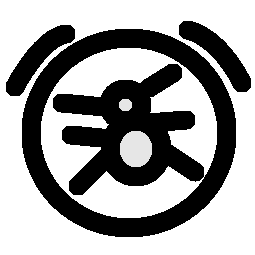On what medium will you write your CV? Paper or digital CV, it all depends on the visibility you want to give to your CV and how you are going to send it (handing in a CV to the recruiter or answering an ad online).
In the vast majority of cases, the digital CV will be preferred. This format will allow it to be distributed on various job offer platforms, such as cadremploi or keljob, or on social networks.
Our Cadremploi advice: For all digital CVs, give preference to the PDF format so that it can be opened by all recruiters. Also, pay attention to the font you use on your CV.
How can I make the most of the sections of my CV?
A good CV should include all the information the recruiter needs at a glance. The clarity of your CV must prevail over originality. Some sections are essential for the recruiter to know you better, you can hardly do without them. Some information should also be removed from your CV.
There are two options for presenting your CV:
A presentation by headings: this will highlight the candidate’s experiences without showing the chronology of the career. The most common headings are personal presentation, background and education, professional experience, and finally your interests. Do not hesitate to add a References section if you have good recommendations relevant to the position you are applying for.
a presentation by skills: this will highlight your achievements during your professional career rather than the title of your position.
Our advice: only use a skills-based CV if your professional experience is extensive enough. Otherwise, your CV will seem particularly poor.
Another piece of advice: if you’re not sure that you can write a good CV, better order it from one of the trusted writing services.
To stand out from other candidates, you can accompany your classic CV with a video pitch.
What information should be included in a CV?
Before writing your CV, gather the information that should be included in the main sections or those that you want to highlight: your background and training, languages spoken, professional experience, but also your hobbies or interests.
Your CV must faithfully retrace your career path. Be careful not to fall into the deceptive CV!
To write a complete CV, find below the information to be filled in:
Personal presentation: last name, first name, contact information. You can also add your photo which, even if it is not mandatory, is appreciated by recruiters.
Background and training: academic background, degree, and what you have learned.
Professional experience: in which company(ies) have you worked, the title of your various positions, and what you did there.
Miscellaneous: interests, competitive sports, level of English…
Tip: avoid “gaps” in your career path, they do not inspire confidence. Learn how to justify them with training, a commitment to an association…
What title should you give your CV?
What title should you give to your CV? The easiest way to do this is to read the ad carefully and note the important words.
This concerns all the terms used, in all the headings. From the sector of activity to the job title or the required experience, not forgetting the level of education, they must be included in the CV so that the recruiter feels that you correspond to the profile sought.
Tip: If the ad specifies that the position is for a “business engineer”, it is advisable to use this exact expression in the title or in the description of a position in the “experience” section. If you’ve done the job, but it was called “sales engineer,” it’s safer to use the title of the ad verbatim. This is why it is useful to adapt your CV to each job offer you respond to.
To make a good CV and get as close as possible to the perfect CV, some tips should be avoided. Discover in our article the worst tips for writing a CV.
Here are the steps I think it is important to go through in order to write an introduction that fulfills its function (taking the reader by the hand to show him how relevant the questions you are asking are and that you have an exciting idea of how to answer them and moreover that you are going to (un)show it to his step by step, according to a well-marked path and “evidence”):
1- A hook: a quote, a current event, an observation, an interview extract, a statistic, etc.
This information (which you will present in more or less detail), leads you to formulate the problem you have chosen for your research.
2- The problem: you question the elements reported as a hook to formulate the questions that guided your research. After having formulated an initial question, you formulate others…
3 – The presentation of your research process: to answer your questions, you had to adopt a strategy (observation, questionnaire, interviews, documentation, readings…), this is the moment to present it.
4- Presentation of your theoretical framework: in the wake of which authors have you built your reflection?
5- Announcement of the plan: in what stages will you answer the questions formulated in the problem? What will you (un)show in each of your parts?
I recommend that you read several introductions to books, articles, or dissertations, and see if these different elements appear in them. Pay attention to how the authors have chosen to bring their problem to life and take inspiration from the ways of proceeding that seem the most relevant to you.
Once you’re pretty much satisfied with your introduction (don’t be too a perfectionist, so that you don’t end up with a perfect intro and first part…and only two days left to finish writing your other two parts, your conclusion and finish “everything else”, i.e., your biblio, your layout, your proofreading, your printing, your binding, etc., etc., etc.), put it next to your detailed plan. On the other hand, you can find a writer for your paper to proofread it.
– Your introduction explains why it is really interesting (and fundamental) to ask the question you have asked yourself, and announces the thesis you will defend (the answer to the question posed in the problem).
– Your plan allows you to understand the steps you will go through to answer your question.
– The conclusion concludes: this means that you have asked yourself a question and answered it. Your conclusion affirms this answer, where you have ended up.
In the recent article, the site team has described many of the secrets of academic sites, and I am grateful for their honesty. Now I’m not afraid to order papers online!


Get involved!
Comments